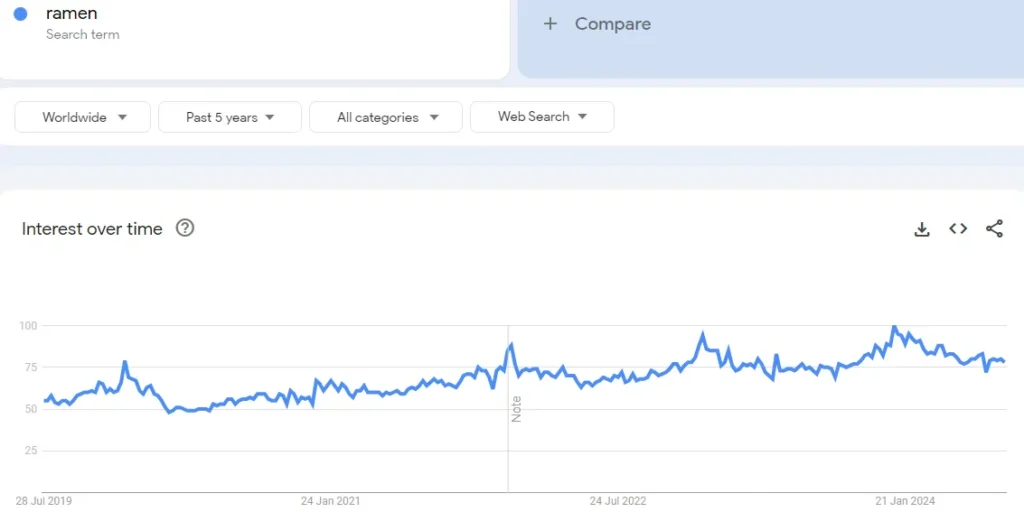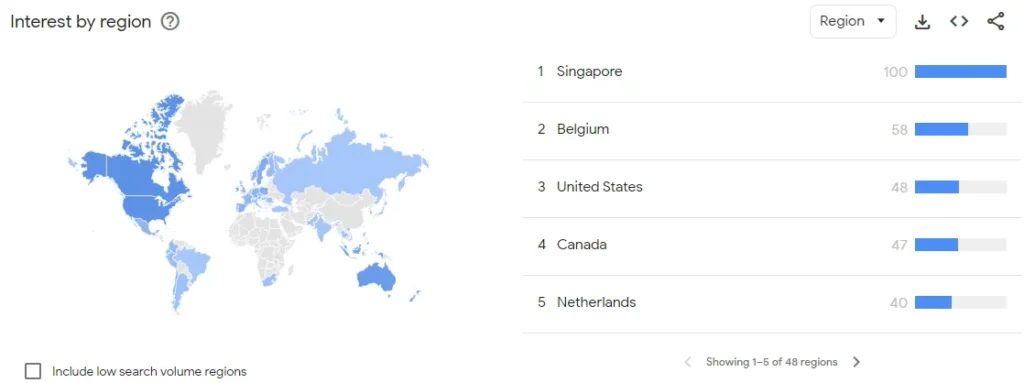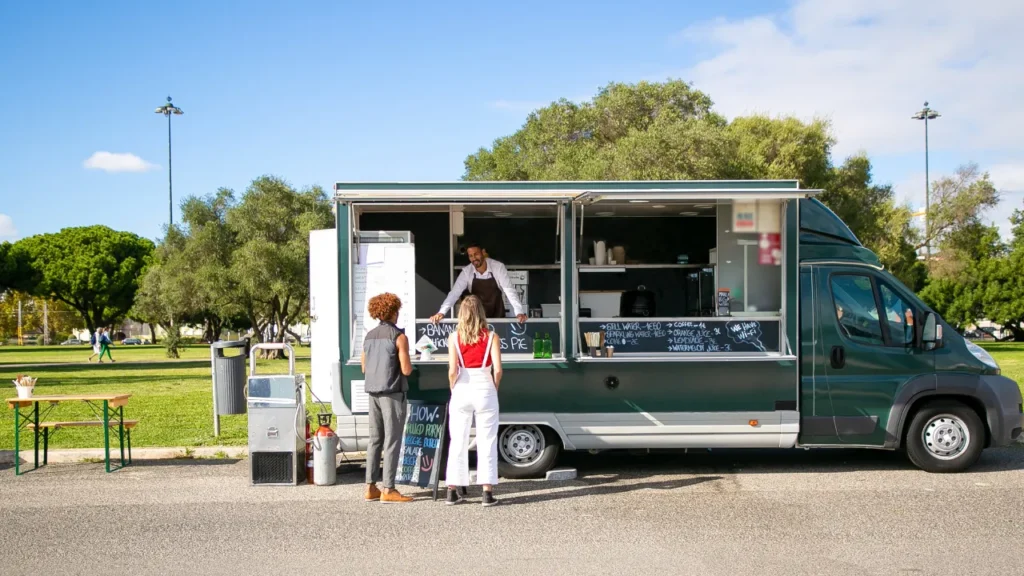Want to start a reman business, but not sure where to start? You’re in the right place.
If so, then you are in luck! our informative blog post will teach you how you can set up a ramen noodles restaurant – the step-by-step info will provide a road map to the process.
Before opening a ramen shop, consider a highly targeted location, unique flavored recipes, purchasing necessary ingredients and supplies, local food laws, marketing, staffing, etc.
So whether you are a newbie or an existing one, you can find useful insights from this.
You will discover in this post:
- What is a ramen business?
- Setup process and planning
- Ramen shop requirements
- Marketing, sales, and growth
Keep reading to learn the steps and key points.
What is ramen? and business
Ramen dish is a Japanese adaptation of Chinese noodle soups. It is a popular dish in many countries (USA, Japan, South Korea) and is gaining popularity in other countries.

As you can see the Search trend of “Ramen” on Google trend, and its trends over the past 5 years, the data indicate where the dish is mostly searched online (USA, Canada, Australia, etc.).

How to start a ramen business? in 14 steps

Understand the target market
Your research is important to learn the market situation, local demographics, people’s food preferences, and customer habits (dining, online ordering, or fast casual).
When conducting research focus on the target market, competition, and growth opportunity.
Analyze how many noodle shops are in the same location, how they offer service, pricing strategies, menu items, etc. Focusing on the target market builds your business to stand out.
What you should focus on on targeting a wide customer base:
- Ramen types: traditional, fusion, vegan, or instant ramen.
- Pricing strategy: Budget-friendly, mid-range, or premium.
- Location: target urban, suburban, or college town.
- Shop type: Casual, upscale, fast-casual, or online ordering.
The target customer for your ramen shop depends on your target location, the popularity of ramen in this area, demographics, and location type (local, urban, town).
Ramen is enjoyed by people of all ages, from young adults aged 18-24, Kids, and Students.
Your target market: Students, young adults, families, office workers, tourists, and ramen enthusiasts (looking to try different flavors and taste).
Market growth:
In 2023, the global market for instant noodles was valued at $57.73 billion.
Projections indicate this market will expand from $61.08 billion in 2024 to $98.26 billion by 2032, reflecting a compound annual growth rate (CAGR) of 6.12% over the forecast period.
The Asia Pacific region led the market in 2023, holding an 85.81% share.
Source: Fortune Business Insights

Choose a business-format
Before choosing a business format – understand your target market, and evaluate which model will be best to reach your target customer, your funding sources, and your interest.
Here are some business formats, you can consider. Depending on your planning, resources, and target market – you can choose any business model from them.
- Traditional shop (fast casual or dining)
- Ramen food truck
- Online delivery service
- Ramen catering idea
Traditional shop idea:
Running your physical restaurant requires staffing, quality ingredients, supplies, and enough space to serve food, including additional costs such as (rent, utilities, operating costs, etc.).
Comparing fast casual and dining ramen restaurants:
| Aspect | Fast Casual | Dining |
|---|---|---|
| Service style | Quick service, counter ordering | Full table service |
| Atmosphere | Casual, modern, | Refined, relaxed |
| Price point | Lower, more accessible | Higher, premium experience |
| Menu | Limited, popular ramen varieties | Extensive, variety of ramen |
| Experience | Efficient, convenient, quick meals | Quality-focused, leisurely dining |
Ramen food truck:

On the other hand, mobile food trucks are the best option, compared to traditional restaurants. Food trucks require less investment in terms of rent, interior, and equipment.
The main advantage is “mobility” which allows you to target different markets and you can easily relocate your food truck to any events, or festivals where more foot traffic.
- Vehicle: Equipped with kitchen on wheels.
- Equipment: Commercial kitchen appliances.
- Staff: Cooks and service personnel.
- Licenses: Business, food handler, health, vehicle inspection, etc.
- Decorate: Install window tints, decals, and stickers, also upgrade the vehicle’s look.
You can purchase a new vehicle, but buying a used one can be budget-friendly.
Create a ramen business plan
Before opening a ramen shop create a well-researched plan, and outline all the essential steps. A business plan will help to reach your goals and objectives, so it is necessary for everyone.
Write focusing on starting a ramen shop – about your product, target customers, requirements, investment, funding, setup, pricing model, and marketing plan.
A business plan should cover:
- Product: Your ramen style, unique features, and menu.
- Customers: Who you’re targeting and their preferences.
- Costs: Startup expenses, ongoing costs, and funding needs.
- Location: Where to open, size, and layout.
- Operations: Staff, permits, and kitchen setup.
- Pricing: How much to charge for your ramen?
- Marketing: How to attract customers and build your brand.
A solid business plan will guide your ramen shop to success.
Take the help of online resources, blog posts, and templates for writing a plan.
- Small Business Administration (SBA) – Learn step-by-step guides.
- Bplans: You can find a wealth of articles, templates, and examples.
- LivePlan: A business planning software.
Calculate the startup costs
Calculate the cost involved in setting up a ramen kitchen.
The expenses can vary depending on factors such as location, size of the establishment, quality of equipment chosen, and any additional renovations required.
Conduct thorough research and create a detailed budget plan to ensure you allocate funds appropriately for each aspect of the setup process.
Here are only the basic setup requirements for a ramen kitchen, as you know setting up a kitchen requires lots of investment, so it depends on your budget and planning.
List of the initial costs:
- Location and lease
- Kitchen equipment
- Inventory
- Labor
- Permits and licenses
- Marketing and advertising
- Contingency
Pick your location
The next step is choosing a suitable location.
Choosing a potential location for ramen shops should be a priority, where more crowded areas, high foot traffic, busy streets, and highway exits – this type of spot is suitable for selling ramen.
Place your shop near, schools, colleges, universities, sports stadiums, parking lots, malls, and other famous places, because where you can easily attract more customers.
Keep those things in mind, when selecting a spot:
- Accessibility: Accessible by foot, car, bike, and other vehicle.
- Facilities: Check facilities like parking, electricity, wifi, etc.
- Foot traffic: Find a location with high foot traffic and good visibility.
- Target market: Understand the area’s demographics and ideal customer base.
- Budget: Rental cost, lease terms, and other costs.
- Regulation: Check the zoning laws and permit requirements.
- Future plan: Focus on your future growth and expansion.
Design your menu
Once you have set up your physical space, next is the time to prepare your ramen menu.
Ramen noodles are of a lot of variety, as well as they are served in different flavors, that’s why you have to create a menu list, which will help your customers to order easily.
Pricing should also be added along with the menu.
Providing the best service should be your priority. So your customer can enjoy a delicious and satisfying meal without spending a lot of money, keep your prices affordable to attract more.
Ramen menu options:

| Type of ramen | Broth |
|---|---|
| Tonkotsu ramen | Pork bone |
| Shoyu ramen | Soy sauce |
| Miso ramen | Miso |
| Shio ramen | Salt |
| Spicy ramen | Pork or chicken broth with chili peppers |
| Tsukemen | Pork or chicken broth with soy sauce or miso |
Get menu ideas from your competitors, and visit their shop’s websites to learn more about the menu.
Select equipment and supplies
Investing in high-quality equipment and supplies is essential to making high-quality ramen. Before purchasing – create a basic list of all essential kitchen tools and supplies.
What do you need for your ramen shop?
- Noodle making supplies
- Broth making supplies
- Cooking and service
- Kitchen Appliances
- Dining area equipment
- Packaging material
- Cleaning supplies
When buying equipment, prioritize quality, compare prices across platforms, and verify customer reviews. Consider things like specials, warranty coverage, and return policies.
For making tasty, flavorful ramen buy quality, fresh, and organic ingredients.
Ingredients for ramen:
- Noodles
- Broth ingredients (bones, vegetables, etc.)
- Proteins (pork, chicken, eggs, etc.)
- Toppings (green onions, seaweed, bamboo shoots, etc.)
- Sauces and seasonings
By carefully choosing equipment and prioritizing ingredient quality, you’ll lay a strong foundation for your ramen shop’s success. Based on your budget – select the necessary supplies.
Apply for license and permits
Now you know where and how to set up your business. However, running a food-based shop requires permits and proper licenses from appropriate authorities.
Your business should comply with the legal requirements and guidelines as per state, federal, and local rules. It is an important step for running a business or ramen shop smoothly.
Legal fulfillment not only demonstrates your compliance with local laws and regulations but also assures your customers that they can trust and patronize your service with confidence.
General legal requirements:
- Choose a legal structure (sole proprietorship, partnership, LLC, or corporation).
- Register your business. SBA – Small Business Administration
- Obtain permits and licenses: Health, business license, food handling, zoning, and fire safety permits.
- Register for tax: Sales tax, EIN, occupational licenses.
- May require a food safety certification
Obtaining the necessary paperwork can be completed for beginners. But those who are unsure what to do, then get help from an accountant or legal attorney to determine what exactly is needed.
Create a marketing plan

Marketing your ramen shop, and attracting customers to your shop is the next challenging part. With the right approach, and creating an effective plan, it is easy to advertise your service.
Initially, it can be difficult to engage and attract customers to your ramen shop, but over time, by providing quality services to your audience, you can gain popularity and brand value.
- Branding: Develop a strong brand identity with a memorable name, and eye-catching logo, choosing attractive colors, and consistent fonts.
- Social media presence: Share content, posts, and recipes and connect with people on popular platforms like Instagram, Facebook, Twitter, TikTok, and LinkedIn.
- Content creation: Develop engaging content, including photos, videos, and written posts, to share on social media, email newsletters, and your website.
- Advertising: Use a mix of advertising methods such as social media ads, radio spots, print ads, and email marketing campaigns.
- Search Engine Optimization (SEO): Optimize your website to rank higher on search engines, making it easier for potential customers to find you online.
Regular work, dedication, and consistent efforts help to build a loyal customer base.
Final thoughts
Starting a ramen shop can be profitable, but it takes proper planning with an effective strategy.
For insight and guidance on ramen shops, you can hire a consultant, who guides you on menu development, marketing strategies, and business planning.
Also, you can learn yourself with time and gain experience.
Hopefully, this post is helpful, if have any doubts ask me in the comment section. Thanks, for visiting our site, if the article is informative, then share it with your friends.
You might also like:
FAQs on starting a ramen business
Is ramen a good business?
Due rise of the fast-paced lifestyle, instant noodles, ramen, and pasta like fast food are convenient and demanding meal solutions. This creates an opportunity to start a business in this industry, with the growing market valuation opening a ramen shop is a profitable idea.
What equipment do you need to make ramen?
At home – for making ramen you can use basic kitchen equipment, such as (a knife, cutting board, kitchen scale, boiling pot, soup ladle, etc). If for commercial purposes running a ramen shop requires some specialized equipment. Noodle making (noodle machine, dough mixer, cutter, drying racks), cooking and serving (stoves and range, noodle cookers, warming drawers, bowls, chopsticks), etc.
What are the main ingredients for ramen?
The main ingredients for making ramen are noodles, broth (the foundation of ramen), protein (meat, seafood), and toppings (eggs, seaweed, green onions, and bamboo shoots).
What is the most popular type of ramen?
Shoyu, ramen is most popular.





